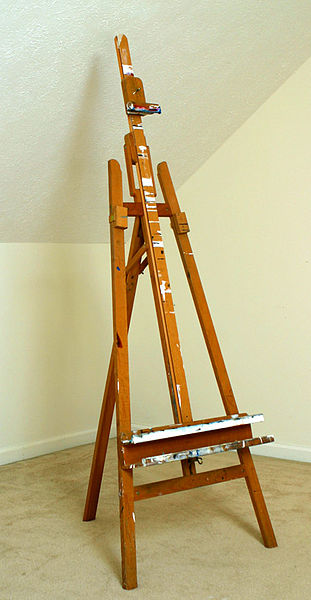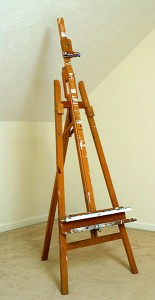5 Tips in Buying an Artist’s Easel
 In a previous blog post, I explained the different types of easels available to painters. With a wide range of easels out there, how do you choose the easel for you? Here are tips to help you in selecting the perfect easel:
In a previous blog post, I explained the different types of easels available to painters. With a wide range of easels out there, how do you choose the easel for you? Here are tips to help you in selecting the perfect easel:
Tip #1. Ask these questions to yourself:
- What kind of painting do I always do?
- What medium am I using?
- What is my budget for an easel?
- Where will I place and store the easel? Do I have adequate space?
- Where do I usually do my paintings? Inside a studio or outdoors?
Your answers to these questions will help you decide on which easel is best for you. A tabletop easel is best if you like to paint small-scale paintings or you have very limited space in your room. Different medium require different easels. For example, if you paint with oils, use an A-frame or H-frame easel, or whatever easel that will provide you with a vertical working surface. If you use several medium such as oils and watercolors, a convertible easel is best. Aside from these factors, the budget and space should also be considered.
Tip #2. Check the sturdiness of the easel. The easel should be sturdy enough to hold your canvas, support the painting process, and will not easily topple. The larger the canvas you’re working on, the sturdier the easel should be. You wouldn’t want to work on a shaky surface wherein each brush strokes vibrate because the easel cannot give ample support. Make sure that you’re not buying a display easel which is lightweight and spindly. It is designed for showcasing paintings, and not for working on paintings.
Tip #3. Choose an easel that offers adjustability. Buy an easel which provides the greatest degree of adjustability. When painting, you may want to paint standing up or sitting down, you need to work on top of the canvas as well as at the bottom. You need to have an easel that can be adjusted to give you the right tilt so you can paint on different areas of the canvas.
Tip #4. Look for an easy-to-use easel. This tip is related to Tip #3. Check if you can easily use the screw and bolt mechanism of the easel. See if it tightens properly according to the height and angle you preferred.
Tip #5. Save money for a quality easel. Keep in mind that an easel is one of your biggest expense in painting. You may have to wait for some time and keep saving for a high quality easel rather than buying cheap easels. You will be using an easel for a long time so it’s better to buy an easel that would last.
